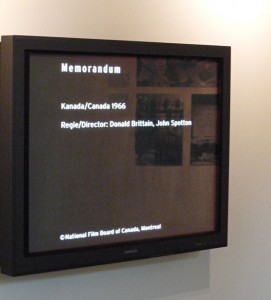 A police siren blares through the last rooms of the permanent exhibition. The source of the alarming noise is a film excerpt being displayed on a large screen.
A police siren blares through the last rooms of the permanent exhibition. The source of the alarming noise is a film excerpt being displayed on a large screen.
This section of the exhibition is about the Frankfurt Auschwitz trial that took place from December 1963 until August 1965. Former SS members of the Auschwitz concentration camp authority were tried for murder or for aiding and abetting murder. The litigation is regarded as a turning point in the way the National Socialist past was dealt with in the new Federal Republic.
The film sequence shows the defendants stepping one by one out of a police car to enter the courthouse. Some hold their leather briefcases in front of their faces; others cover their eyes with their hands. Victor Capesius, the pharmacist of Auschwitz, glares unashamed into the camera. We look directly into his eyes. A man who assured his Jewish former colleague upon his arrival at Auschwitz that the latter’s wife and young daughters had only gone to bathe. And then Wilhelm Boger gets out of the car. He was responsible for the political interrogations at Auschwitz, meaning: he tortured people – often to death. He uses his bag to try to knock down the camera. The police stand beside him, uncertain what to do.
The trial received media attention worldwide. The filmmakers came from Canada specifically in order to capture this event. They travelled throughout Germany with the question, why was the Holocaust initiated from this of all countries.
We show just these two minutes, because we assume that most visitors don’t have the time or stamina at the end of an entire museum tour to watch the whole film. If you are curious to know what further answers the two Canadian’s discovered on their journey, we warmly recommend that you watch this impressive film from start to finish.
Memorandum by Donald Brittain & by John Spotton, National Film Board of Canada
Monika Flores Martínez, Exhibitions